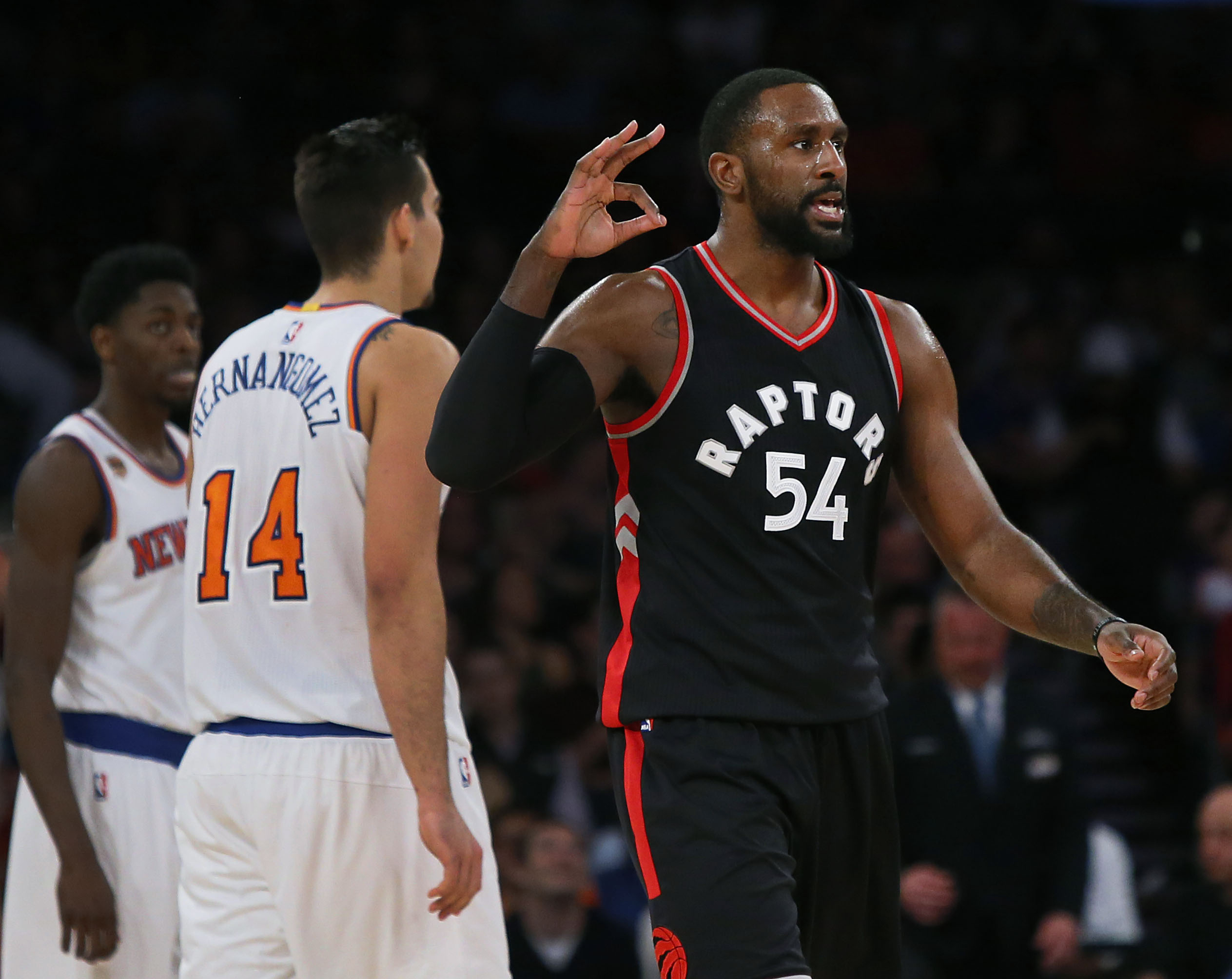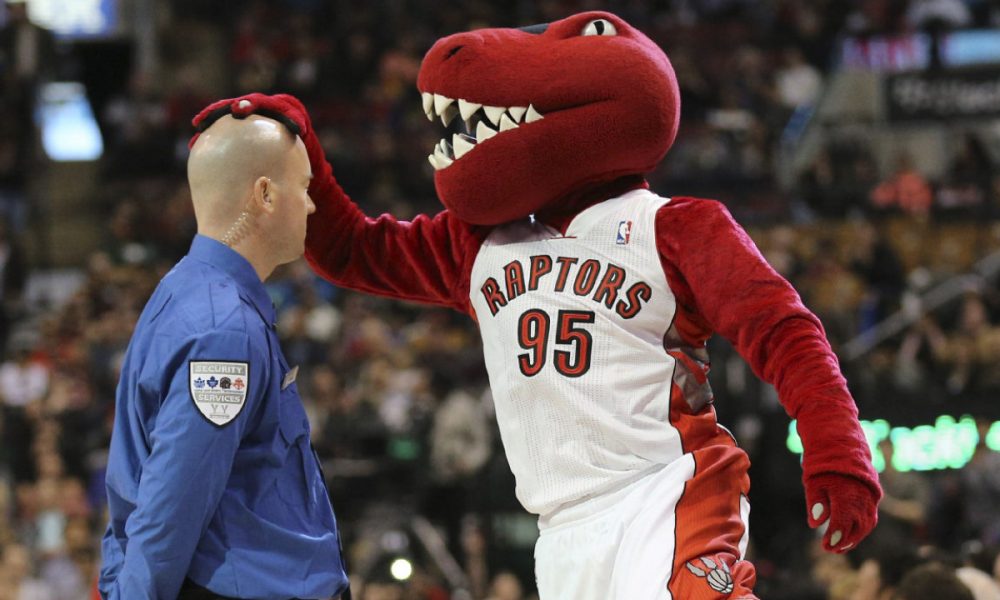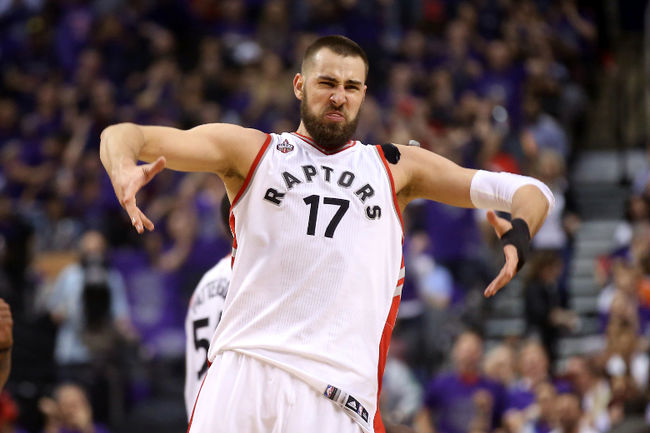The Patrick Patterson era in Toronto has come to a conclusion.
Adrian Wojnarowski is reporting that Patterson has signed a three-year, $16.4-million deal with the Oklahoma City Thunder. The third year is a player option, and Patterson is expected to start in the new-look Thunder lineup that includes Paul George alongside Russell Westbrook.
To call this a discount would be an understatement, as just a few months ago it seemed like Patterson was headed for a pay day in the neighborhood of $12- or even $15-million annually. After players like Jon Leuer and Mirza Teletovic received eight-figure annual salaries last summer, Patterson seemed a good candidate to price himself out of the Raptors’ range eventually. Instead, he suffered a knee injury that derailed his season, seemed to sap his confidence, and apparently cratered his market. An annual hit of $5.5 million for Patterson is an exceptional deal for the Thunder, another nice piece of business for Sam Presti in an offseason full of them (he’s effectively saved money turning Victor Oladipo, Domantas Sabonis, and Taj Gibson into George and Patterson, and landing Patterson for the taxpayer mid-level avoids the hard cap).
How, exactly, Patterson’s value got to this point was a little tough to watch, given all the good he’d contributed to that point. Always a reliable defender, Patterson derived most of his offensive value from his ability to knock down threes. Threes are by their nature a high-variance shot, but Patterson seemed exceptionally streaky, and with a steady diet of catch-and-shoot looks, cold streaks stood out. That he was cold in back-to-back playoff runs, shooting 30 and 30.8 percent, respectively, masks that his shot is still plenty reliable in a large sample, but his 2016-17 playoff performance was shaky on the whole was disappointing, and his role surprisingly diminished. There was some chicken-or-the-egg going on there, but Patterson never really rediscovered his groove after missing 10 of 12 games and then six more later, losing playing time to the incoming P.J. Tucker and Serge Ibaka.
To be clear, that explains what may have gone into Patterson’s market value taking a hit but does not stand to knock Patterson as a player overall. The 2017 market as a whole has been very unkind to free agents, and Patterson is worth more than this salary in a vacuum. As cap space was eaten up quickly, though, it seemed Patterson may be destined for one of the mid-level exception amounts. There was even a thought that, with Patterson’s market apparently light and the Raptors light on options, a one-year reunion would be best for both sides. But the relationship between the sides seemed to fray toward the end of the year, Patterson missed his locker clean-out day, and there wasn’t a hint that the sides may still be talking. Landing in Oklahoma City, when he can opt out in two years at age 30 for one more multi-year deal, is a smart bet on his own longevity and his fit there (which, again, is terrific).
It’s just at a price well below the value Patterson provides. Even with the nods to his second-half struggles and a couple of poor playoff series, Patterson has a large sample of data suggesting his value extends well beyond that salary. His value to the Raptors has been consistently pronounced, with Patterson ranking not only along the Raptors’ leaders in plus-minus, but among the league’s leaders in plus-minus on a regular basis.
Patterson has “only” averaged 7.6 points, 4.8 rebounds, and 1.4 assists for the Raptors, but he’s shot 37.3 percent on more than three threes per-game, doesn’t turn the ball over much, and stood as one of the team’s best and most versatile defenders. Initially a defender at the four only, Patterson eventually showed he could hang with tougher power threes or even play some small-ball center when needed, opening up a lot of flexibility and switching options for head coach Dwane Casey on that end. He’s a below-average rebounder and doesn’t offer much other than 3-point shooting on offense – he improved a bit putting the ball on the floor to attack closeouts but it never materialized in a higher assist rate or free-throw rate – but his defensive versatility proved immensely important to Toronto, and the his presence as a pick-and-pop threat was an important part of many of Toronto’s pet sets, particularly when they played lineups light on shooting.
All told, Patterson became something of an advanced-stats darling in Toronto, taking up Amir Johnson’s mantle as the guy making a big impact without large counting stats. Over his three-and-a-half seasons in Toronto, he was worth 16.5 win shares, 100th in the NBA during that span. He was 56th in Box Plus-Minus, 61st in value over replacement player, and ranked in the top-15 among all power forwards in real plus-minus in each of the last two seasons. This is a lot of ways of saying the Raptors were much better off with Patterson than without him – Toronto outscored opponents by 1,117 points with Patterson on the floor in his three full seasons with the team, the 16th-highest total in the NBA (only two players ranked higher with fewer minutes). That’s a bigger plus-minus than Kyle Lowry, DeMar DeRozan, or any other Raptor in that span. And sure, there’s noise there, as Patterson mostly came off the bench and spent a good deal of his minutes with Lowry, but after a certain amount of time, the role player has to get some credit, too.
The entire time Patterson was in Toronto, the team was looking for a starting power forward. He wasn’t a top-tier option, but he was passed over for Luis Scola, Pascal Siakam, and others because of some ill-conceived thought he couldn’t start based on a few preseason games and then a few postseason games in which he didn’t knock down threes but still played well overall. It is not among the basketball world’s grave injustices, but Patterson was always sitting there ready to fill in as a starter, a natural fit with the rest of the starting lineup. Instead, he earned raves for being a super-sub or “sixth starter,” and the Raptors relied on him in a role more commensurate with his value late in games.
He’ll get to start now in OKC, and he’ll be in a spot where he fits well once again. He’ll knock down some threes, play some defense that goes under the radar, and quietly outproduce this contract. He’ll have cold streaks from long-range, and that variance will confuse his production again. But he’ll be good, and he’ll be steady. That’s what he’s been in Toronto for years, and while it’s understandable that sometimes it’s time to call a relationship over, the Raptors will miss that floor-spacing at the four and the defensive intelligence around the court. They’ll miss his subtle impact and the reliability he provided in the second unit. He was one of the Raptors four or five most important players during the best stretch in franchise history, and you don’t just replace that internally without a bump or two in the road. Losing him and Tucker together is very hard on the power forward position and the team’s defensive potential. Patterson was also a great advocate for the city, for as much as that matters.
Alas, you can’t keep everyone, the Raptors would have been diving deeper into the luxury tax to retain him, and maybe Patterson didn’t want to stay, anyway. He probably didn’t want to stay, reading the tea leaves and some late-season subtext. It’s a good opportunity for Patterson, even if he didn’t get the big pay-day that was expected a while back. If he has many more good days than bad, as he did here, that’ll be a heck of a deal for the Thunder.



